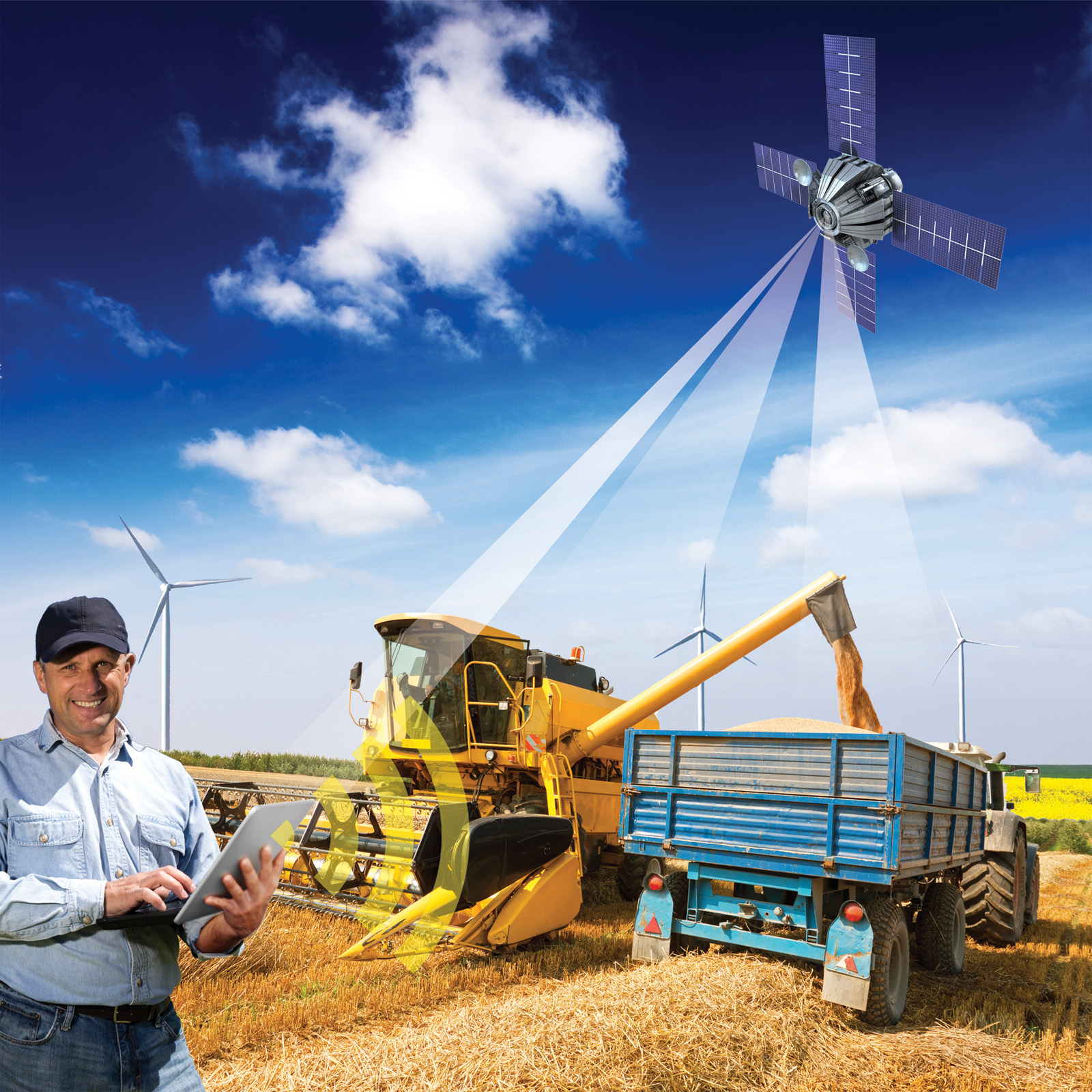Embedded World 2013
Smart agriculture
Integrating embedded systems into the IT infrastructure holds immense potential for the productive sectors of the economy. At the “Embedded World 2013” trade show in Nuremberg from 26 to 28 February, Fraunhofer researchers – using “Smart Farming” as an example – will demonstrate how the interaction of machines in cyber-physical systems operates safely and securely (Hall 5, Booth 228).

Climate change, population growth and increasingly scarce resources are putting agriculture under pressure. Farmers must harvest as much as possible from the smallest possible land surface. Until now, the industry confronted this challenge with innovations in individual sectors: Intelligent systems regulate engines in order to save on gas, for instance. With the aid of satellites and sensor technology, farming equipment can automatically perform the field work; in doing so, they efficiently distribute seed, fertilizer and pesticides on the arable land. Nonetheless, optimization is gradually hitting its limits. The next step is to network these individual systems into cyber-physical production systems. They map the entire process electronically, from the farm computer to the harvesting operation. Thus, these systems can substantially increase efficiency and quality once again. At the 2013 Embedded World trade show (26 to 28 February in Nuremberg) – specifically at the joint Fraunhofer booth 228 in Hall B5 – researchers from the Fraunhofer Institute for Experimental Software Engineering IESE in Kaiserslautern will demonstrate how agriculture will be able to benefit from networked systems in the future.
Intelligent networking as competitive advantage
For their exhibit, the experts intentionally chose the field of agriculture: A miniature tractor with an implement moves across a plot of land on an agricultural diorama. Located at the edge of the farmland are two tablet PCs. Visitors to the trade show can use them to start up the automated control of the farm equipment. Six screens are suspended above the model farm. They display the processes behind the automation, showing how software manages the functionality. Today’s tractors and implements feature extensive use of electronics and software – these are known as “embedded systems.” The motto of the exhibit is “SEE: Software Engineering Explained”. The visualization helps visitors to understand the challenges and solutions of interconnecting embedded systems and IT systems. With intelligent networking, farmers can improve farming productivity. “To many people, software is just an abstract thing,” explains Ralf Kalmar, business area manager at IESE. “However, working with it pays off. Indeed, it is becoming the next major factor in innovation in several industries.”
The networking of ag operations is not limited to simple task management for agricultural machinery. Over the last few years, the number of „players“ in ag business has soared: Besides seed and fertilizer producers, sensor technology and data service providers are joining in the mix, offering geodata and weather data, for instance; systems for e-government and smartphone apps for identifying pests are also used. “The challenge lies in linking all systems intelligently, and in creating standards for interfaces so that all participants can benefit,” says Dr. Jens Knodel, Smart Farming project manager. For this reason, he adds, it is helpful to provide them with the methods of software engineering: from standards management and system architecture to programming code – with particular attention paid to security and reliability.
Better understanding for software development
The chances are good that Kaiserslautern will deliver important momentum to the agricultural industry – thanks to the excellent environment. The Fraunhofer researchers are collaborating with John Deere, which runs the European Technology and Innovation Center (ETIC) in the city. The Fraunhofer Innovation Cluster “Digital Commercial Vehicle Technology,” where the majority of the solutions that are on display were engineered, has existed since April 2007. In addition to IESE, other parties involved include the Fraunhofer Institute for Industrial Mathematics ITWM and companies from throughout the region. Through the Commercial Vehicle Alliance, the cluster is tied to the Center for Commercial Vehicle Technology at the University of Kaiserslautern, and to the Commercial Vehicle Cluster GmbH.
After the trade show, the exhibit will be converted into a “Living Lab.” “It is not restricted to agriculture, but may be of interest to small and medium-sized enterprises, for instance,” says Knodel. “Based on the production units installed in the laboratory, they can see the benefits that networking holds for them - and launch their own development projects.“